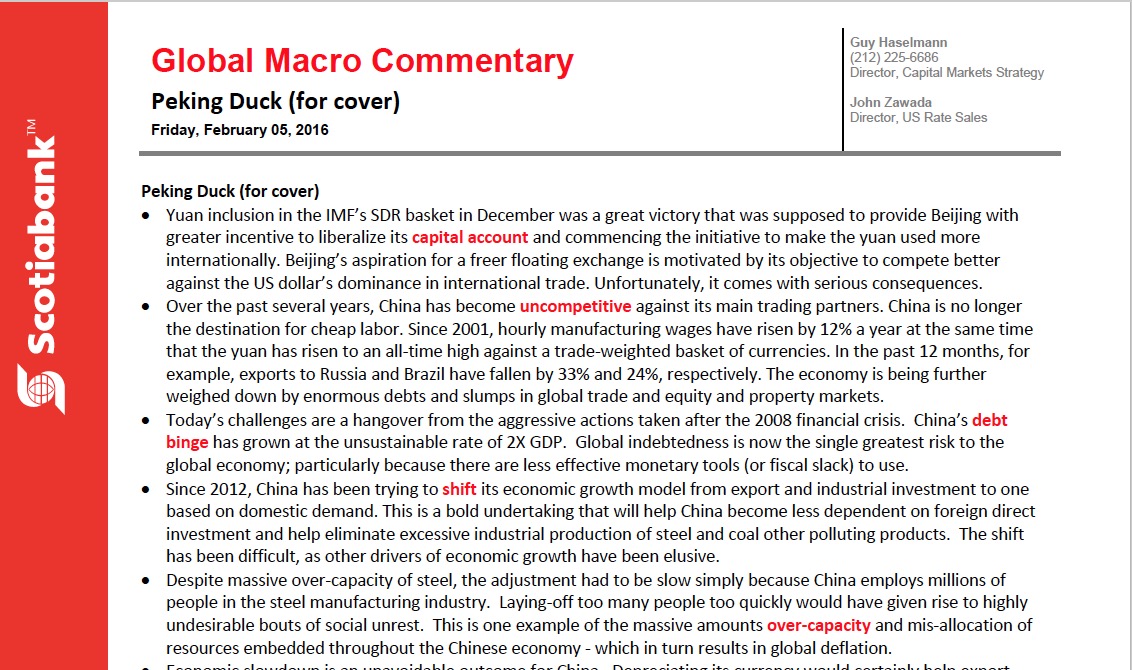Is It Time to Head for the Exits?
by Equity Research, AllianceBernstein
In our view, recent market conditions are more likely to signal a short-term bump in the road, rather than a prolonged recession or financial crisis that leads to an extended bear market. Here’s why.
While stock market returns reflect economic growth over the long run, market signals and economic fundamentals can diverge at times along the way. We see that happening now. The market is effectively pricing in a view that disruptions in the energy market and weakness in China will soon trigger a global recession. We continue to think the economy will grow, albeit at a moderate pace.
In our view, the labor market and consumer demand in the US are strong. Thanks to monetary stimulus, conditions in Europe and Japan are steady. China’s economic growth rate is decelerating, but continued strength in the consumer sector should enable China to grow around 6% a year—a level most countries can only dream of.
As for oil, the latest drop in prices has a silver lining. While it creates near-term pressure in some parts of the economy, low fuel prices help many companies that use energy, as well as virtually all households. On the whole, lower oil prices should boost the economy slightly. On balance, we see today’s uncertainty contributing to greater volatility, but not to greater risk of sustained capital losses.
We’ve found that in times like the present, when macroeconomic concerns drive markets, new information can lead to abrupt shifts from optimism to pessimism, and vice versa; these shifts in sentiment lead to short-lived spikes in volatility. In these “risk-on, risk-off” environments, when extreme swings in sentiment—not fundamentals—drive volatility, focusing on long-term fundamentals is key to success, in our view.
Hence, we do not believe it is prudent for investors to move away from their long-term strategic allocations at this point, and we are not recommending to clients that they sell equities. Our Dynamic Asset Allocation service, which adjusts client exposures to manage risk, is only slightly underweight stocks—and is taking advantage of the sentiment-driven swings in stocks by buying low and selling high. In our view, this environment can prove fruitful for investors who remain calm while others panic.
The views expressed herein do not constitute research, investment advice or trade recommendations and do not necessarily represent the views of all AB portfolio-management teams.
Chief Investment Officer and Co-Head—Multi-Asset Solutions

Daniel Loewy is Chief Investment Officer and Co-Head of Multi-Asset Solutions. He oversees the research and product design of the firm’s multi-asset strategies, as well as their implementation. In addition, Loewy is Chief Investment Officer for Dynamic Asset Allocation, and is responsible for the development and investment decision making for that service. He is also a member of the Real Asset Investment Policy Group and the Target Date Investment Oversight team. Loewy previously led the Wealth Management Group’s research on the major investment issues faced by our highest-net-worth clients, including asset allocation, alternative investments and tax management. Prior to that, he was a research analyst in the equity research department, where he followed the aerospace and defense and capital goods sectors. Additionally, Loewy has served as an associate portfolio manager for our value equity services. He holds a BS in industrial and labor relations from Cornell University and an MBA from Columbia University, and is a CFA charterholder. Location: New York
Chief Investment Officer—Bernstein

Seth Masters is Chief Investment Officer of Bernstein. He heads the team that provides customized wealth-planning advice and manages the firm’s private client portfolios. Masters was previously CIO for Asset Allocation, overseeing the firm’s Dynamic Asset Allocation, Target Date, Target Risk and Indexed services. In June 2008, he was appointed head of AllianceBernstein’s newly formed Defined Contribution business unit, which has since become an industry leader in custom target-date and lifetime income portfolios. Masters became CIO of Blend Strategies in 2002 and launched a range of style-blended services. From 1994 to 2002, he was CIO of Emerging Markets Value Equities. He joined Bernstein in 1991 as a research analyst covering global financial firms. Masters has frequently been cited in print and appeared on television programs dealing with investment strategy. He has published numerous articles, including “The Case for the 20,000 Dow”; “Long-Horizon Investment Planning in Globally Integrated Capital Markets”; “Is There a Better Way to Rebalance?”; and “The Future of Defined Contribution Plans.” Masters worked as a senior associate at Booz, Allen & Hamilton from 1986 to 1990 and taught economics in China from 1983 to 1985. He holds an AB from Princeton University and an MPhil in economics from Oxford University. He is fluent in French and Mandarin Chinese. Location: New York
Related Posts
Copyright © AllianceBernstein















